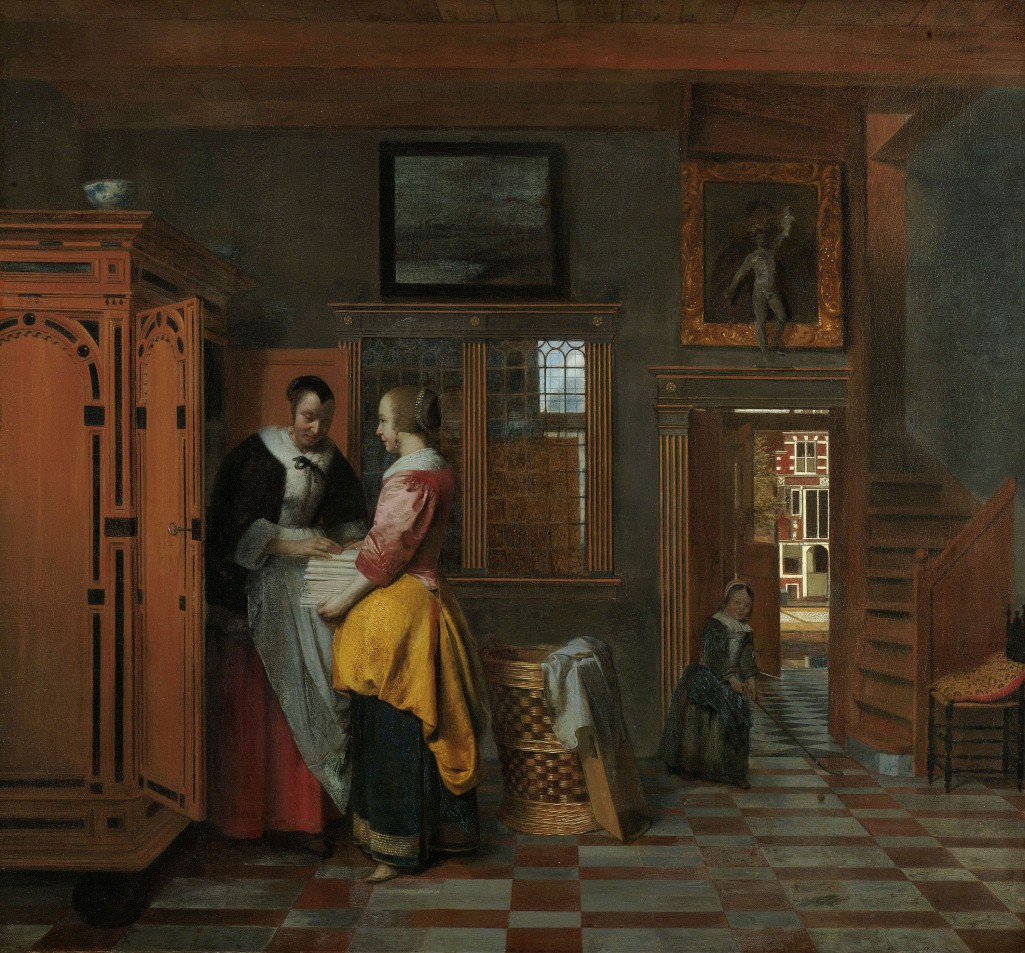Those who thought Dutch Golden Age paintings of black-clad burghers and genre scenes of merry-making and letter-writing ladies reflected a modest life of democratic contentment should think again: this exhibition of Dutch pictures at the MFA Boston reveals a society devoted to money-making, materialism, status, and social climbing. As Jacob Cats, a poet and the powerful Grand Pensionary (chairman of the States of Holland) wrote in 1658: ‘Only when monkeys start to climb can one observe their bare behind.’
Much of this new social order is revealed in paintings produced in the Netherlands and in particular in Holland, the richest province of the Dutch Republic. The Republic broke away from Spanish rule in 1581, having left Catholicism two years earlier to establish the Reformed Church – in practice, Calvinism. Its merchants and financiers made Holland the wealthiest and most urbanised region in the world. At its height, the VOC (United East Indian Company), which was founded in 1602, traded annually five times the amount of goods the English (then British) East India Company did.
With court and church patronage gone, and the emergence of a wealthy public with money to spare, the art market took off. Artists painted their clients’ secular world, be it a successful merchant’s country home, a farrier’s shop, or women stowing freshly laundered linen in a cupboard. The English merchant Peter Mundy was astonished and in 1640, he wrote about ‘All in general striving to adorne their houses…with costly peeces, Butchers and bakers not much inferior in their shoppes. Such is the general Notion, enclination and delight that these Countrie Natives have to Paintings’. In Delft at this time, two thirds of the population owned paintings, with an average of 11 pictures per household.
The show opens with two powerful merchant portraits on loan from Europe: Frans Hals’ Willem van Heythuysen (1625) from Munich and Rembrandt’s Andries de Graeff (1639) from Kassel. Both are full-length, life-size portraits – the preferred format of the English aristocracy. Heythuysen, a textile merchant and one of Haarlem’s richest citizens, owned more than 100 paintings but was so pleased with Hals’ ability to record him as a man of success in his silk finery that he hung it in his entry hall for all visitors to see. The same seems not to be true of the de Graeff portrait, the last in a string of commissions by the equally immodest Amsterdam burgher from Gerard ter Borch, Jan Lievens, and others. When Rembrandt delivered it, de Graeff was not pleased, perhaps because Rembrandt depicted him in the latest informal fashion set by Van Dyck at the English court – lolling nonchalantly against a pedestal, with a dropped glove lying on the floor.
Ronni Baer, Curator of European paintings at the MFA has brought some 70 pictures together for this exhibition. Baer says, ‘Recent scholarship has been concerned with symbols and emblems, or subjects such as genre painting, flowers, portraits or one city. We are trying to look at the broader and fundamental concerns, looking at what the people in the paintings are doing.’ While she landed Vermeer’s intimate and well-known A Lady Writing from Washington’s National Gallery and his refined Astronomer from the Louvre, she also nailed some less familiar pictures including Job Erkckheyde’s Office of a Notary Public (1672), lent by a private collector, and Jacob Duck’s Woman Ironing (1650–65) which comes from Utrecht’s Centraal Museum.
For Baer, the greatest revelation when she was preparing the show was ‘learning all about a subject just by looking at a picture carefully’. She cites subjects such as the brewing and herring industries, and picks out Jacob van Ruisdael’s View of the Plain of Haarlem with Bleaching Grounds (1660–63), this version of the scene lent by a private collector, and Rembrandt’s Jan Rijcksen and His Wife, Griet Jans (1633), better known as The Shipbuilder and His Wife, from The Royal Collection. Her greatest loan, she says, comes from The Mauritshuis: Jan Steen’s delightful Portrait of Jacoba Maria van Wassenaer (1660), known as The Poultry Yard, which depicts the young Jacoba Maria feeding a lamb and surrounded by ducks, chickens, and a decorative peacock. ‘It shows the wealthy did indeed have poultry yards. Most portraits are to do with noble genealogy but this is not.’
‘Class Distinctions: Dutch Paintings in the Age of Rembrandt and Vermeer’ is at the Museum of Fine Arts, Boston from 11 October–18 January 2016.



